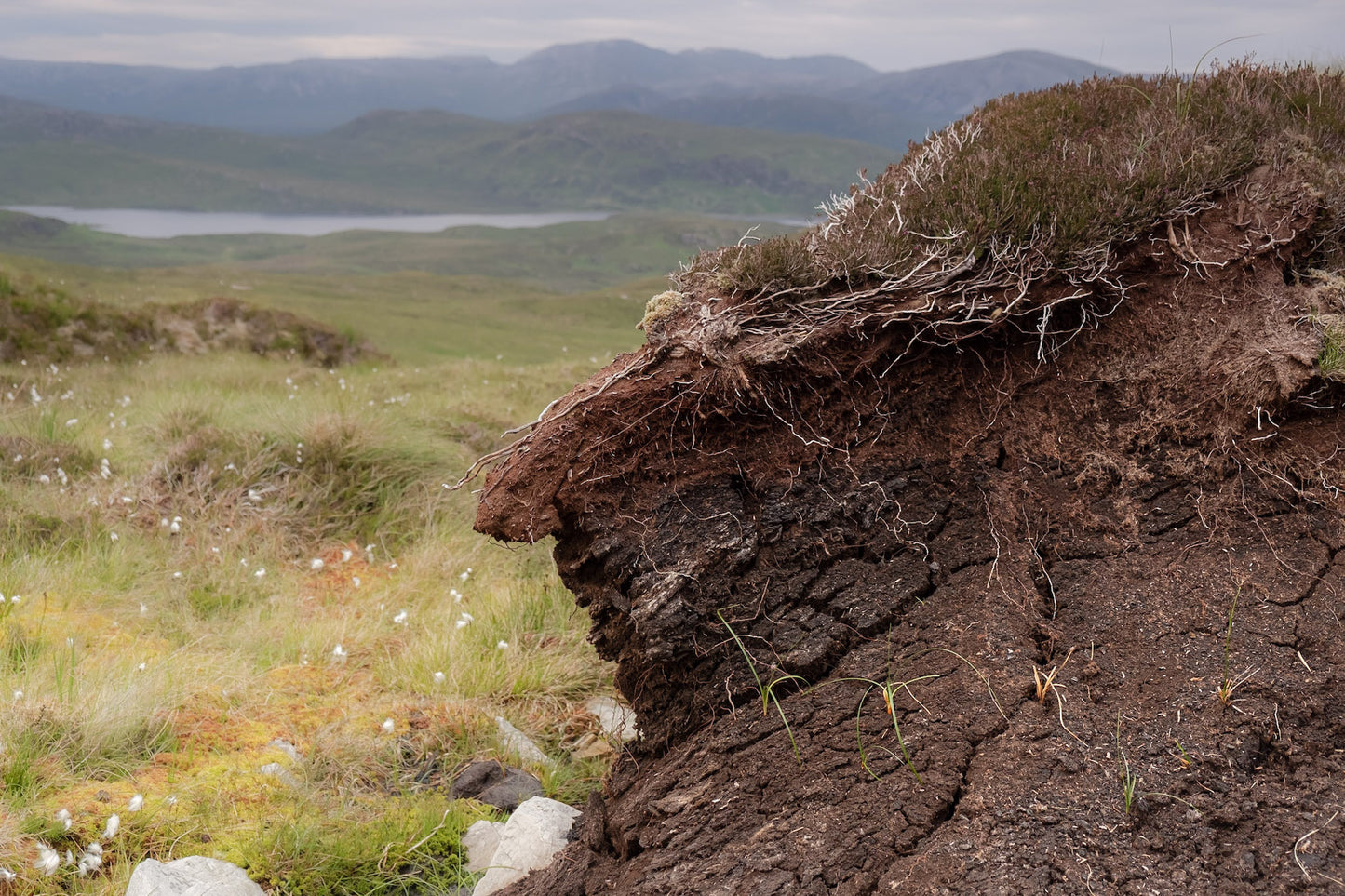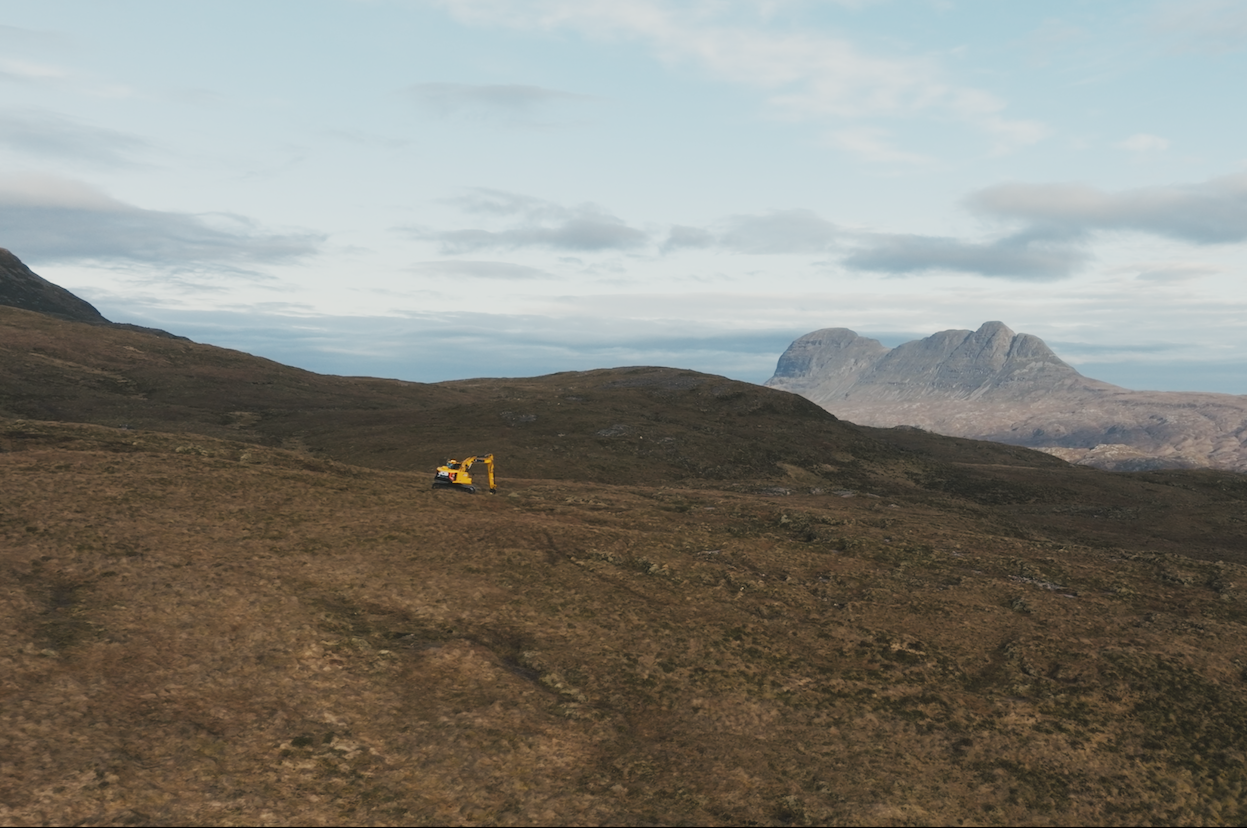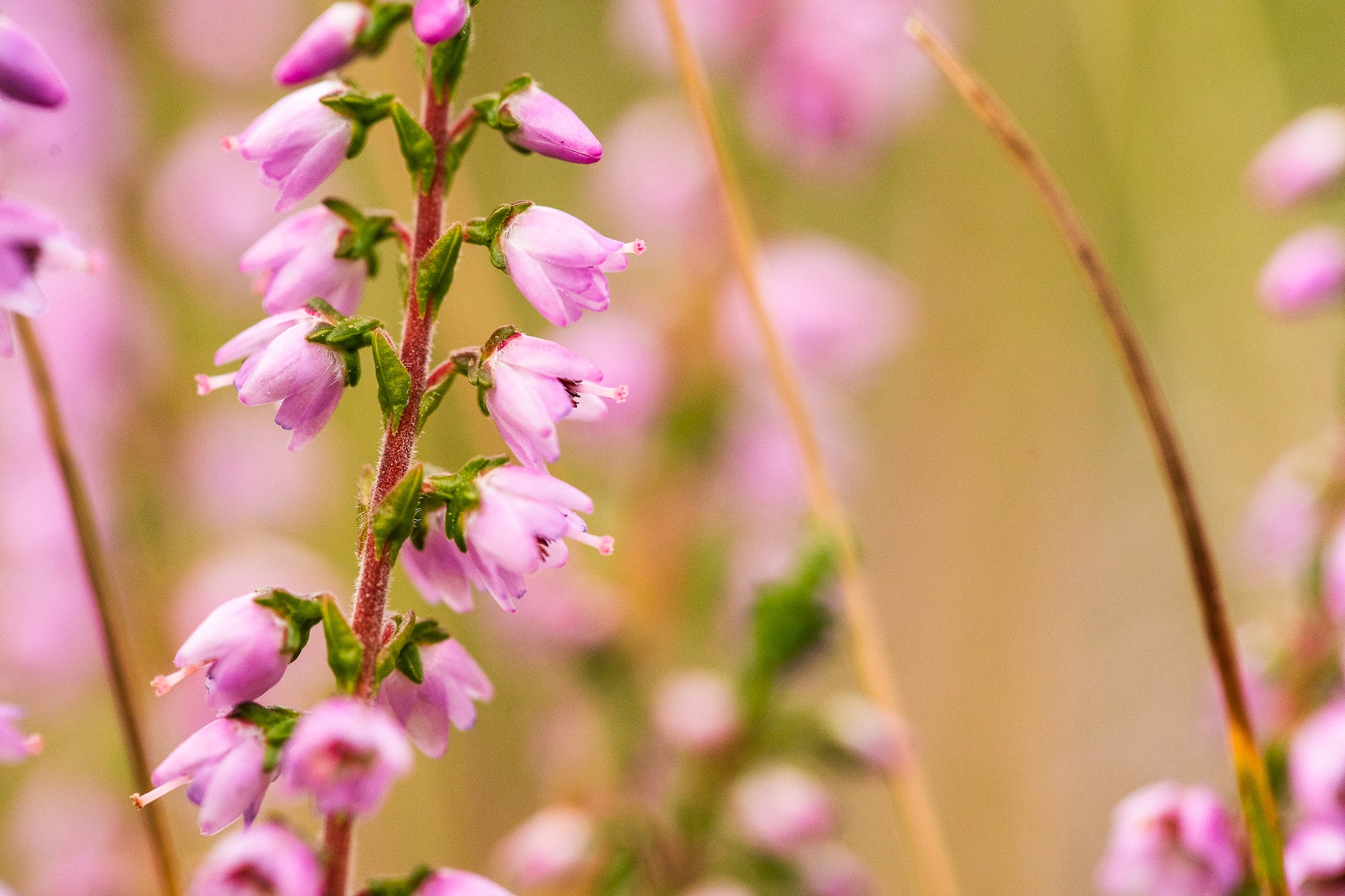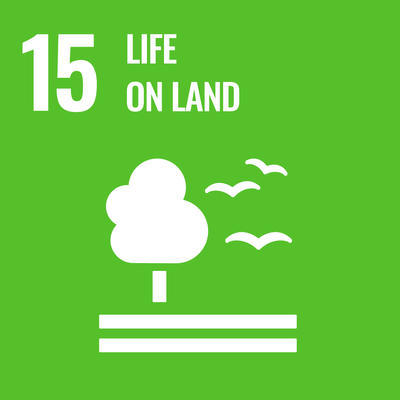Assynt, Scotland
Cùl Mòr
Cùl Mòr
The Cùl Mòr peatland restoration project, located within the Inverpolly Site of Special Scientific Interest (SSSI) and Special Area of Conservation (SAC), lies in the Assynt-Coigach National Scenic Area and the North West Highlands Geopark. Covering 91 hectares owned by the Assynt Foundation, this project is part of a larger programme to restore the Glencanisp and Drumrunie Estates in the northwest Highlands of Scotland.
Couldn't load pickup availability
Unsure of how much to contribute? Use our handy calculator
View full detailsProject highlights
About the project
The restoration work includes re-vegetating bare peat, re-profiling hags, and blocking ditches and drains to raise the water table, allowing peat-forming plants to re-colonise. These plants sequester carbon during their lifecycle, and the waterlogged habitat preserves their carbon in layers of peat after they die. This restoration will help reduce greenhouse gas emissions from the site, supporting both conservation and community-led land management.
Project stats
- Ha restored: 83.66
- TCO2 avoided (expected over contract): 13,370
- Restored: Winter 2023
Credit Type
Pending Issuance Units (PIUs). As we do not charge VAT on this project, you cannot claim carbon neutrality or to have achieved net-zero from supporting it. If you would like to make "neutrality" or net-zero claims, please contact us directly.








Additional Benefits

Improved water quality

Flood mitigation

Biodiversity uplift

Community involvement







Project details
Technology, mechanism and certifications
This peatland is validated by the IUCN Peatland Code.
Reduction type
Avoidance
Project duration
This project’s crediting period is 80 years. Please refer to the Peatland Code’s website for more details on risk management and permanence criteria.
SDGs


FAQs
Why do peatlands need to be restored?
Due to decades of intensive land management practices like drainage, farming, pollution, and peat extraction, 80% of UK peatlands are damaged (ONS). This degradation causes them to dry out and release large amounts of greenhouse gases, previously stored for centuries. In 2017, UK peatlands emitted an estimated 23 million tonnes of CO2e, contributing around 5% of the UK’s total greenhouse gas emissions. Learn more about peatlands and peatland restoration, and find sources for those stats, on our Knowledge Base.
Who is ‘Forest Carbon’?
We are one of the UK’s most established and experienced woodland and peatland project developers; between 2006 - 2022 we were responsible for 4% of all woodland creation in the UK. We’ve been around since before there was even a standard in place to regulate the sale of carbon credits, so we helped to develop one. You can read more about this on our main site.
Looking to support a whole project? Need more than 300 tCO2?
For larger programmes where carbon credit volume requirement is above 300 tCO2e, please get in touch with us directly. Our expert team is ready to help you create customised portfolios that seamlessly support your carbon initiatives and CSR goals.